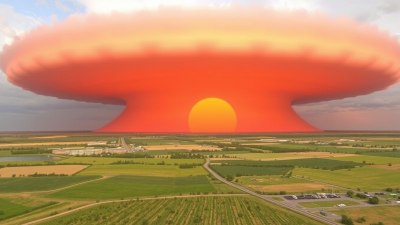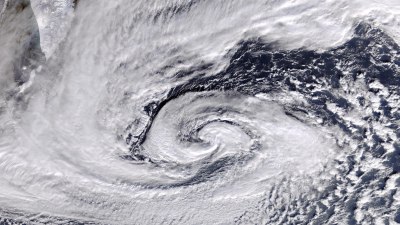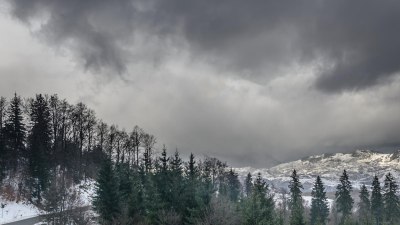How a Heat Dome Forms and Why It’s Dangerous
Discover how heat domes form, their causes, and why they create extreme heat conditions that threaten health and the environment.

A heat dome is a meteorological phenomenon characterized by a persistent, high-pressure system that traps warm air over a region, leading to extreme heat conditions. This phenomenon can cause prolonged heat waves, resulting in severe impacts on human health, infrastructure, and the environment. Understanding how heat domes form and why they are dangerous is essential for preparedness and risk mitigation.
What Is a Heat Dome?
A heat dome is often described as a cap of hot air that settles over an area, much like a lid on a pot, trapping heat beneath it. It occurs when a high-pressure system in the upper atmosphere stalls over a region, suppressing cloud formation and leading to prolonged sunny, hot, and dry weather. The trapped heat builds up over days or weeks, causing temperatures to soar to record-breaking highs.
The Formation of Heat Domes
Heat domes form through a combination of atmospheric conditions involving the interaction of air pressure, jet streams, and temperature gradients. The essential mechanism starts with a strong ridge of high pressure at the mid to upper levels of the atmosphere that remains stationary over a particular region. This ridge acts like a lid, preventing the dispersion of warm air near the surface.
High-pressure systems generally cause air to sink, and as air descends, it compresses and warms up due to increasing atmospheric pressure closer to the ground. This sinking air inhibits cloud formation, allowing more sunlight to reach the Earth's surface, which in turn heats the surface further, reinforcing the cycle of warming.
Another contributing factor is the weakening or looping of the jet stream, the fast-moving air current high in the atmosphere that usually moves weather systems from west to east. When the jet stream slows down or forms unusual loops called ridges and troughs, it can cause high-pressure systems to stall in one spot, creating conditions favorable for heat dome formation.
Role of Geography and Climate Factors
The development of heat domes can be influenced by geographic features such as mountain ranges and large bodies of water. For example, mountain ranges can block or channel airflow, contributing to stagnant air masses trapped in valleys or plains. Meanwhile, drought conditions that dry out soil can amplify heat waves because dry ground reflects less sunlight and heats up more rapidly.
Human-induced climate change has heightened the intensity and frequency of heat domes worldwide. Warmer baseline temperatures, coupled with altered atmospheric circulation patterns, can make heat dome events more severe, longer-lasting, and more common.
Detailed Atmospheric Dynamics
Within a heat dome, the center of high pressure features subsiding air, which compresses and heats as it moves downward. This compression leads to adiabatic warming – an increase in temperature without addition of heat energy but due to air pressure changes. At the surface, the absence of clouds allows unobstructed solar radiation to warm the ground, further increasing air temperatures.
Because the high-pressure system suppresses convection, there is limited vertical mixing of the atmosphere. This means pollutants and heat remain trapped near the surface, contributing to hazardous air quality and intensified heat felt by inhabitants. Additionally, the radiative cooling at night is reduced, causing nighttime temperatures to remain high, worsening health risks.
Why Heat Domes Are Dangerous
Heat domes create prolonged periods of dangerously high temperatures, which can have severe consequences for human health and infrastructure. Excessive heat places stress on the cardiovascular system and can lead to heat-related illnesses such as heat exhaustion and heat stroke. Vulnerable populations, including the elderly, children, and those with pre-existing health conditions, are especially at risk.
In urban areas, the heat dome effect is exacerbated by the urban heat island phenomenon, where concrete, asphalt, and buildings absorb and retain heat more than rural surroundings. This can push temperatures even higher and increase the danger posed by a heat dome.
Heat domes also strain energy systems due to increased demand for air conditioning, which can lead to power outages. Infrastructure such as roads and rails may buckle under extreme heat, and water supplies can become scarce as temperatures climb and evaporation rates increase.
Environmental and Economic Impacts
Beyond human health, heat domes can have broad environmental impacts. Prolonged heat and drought stress vegetation, contributing to crop failures and wildfires. Wildlife habitats become disrupted as temperatures rise and water becomes scarce.
Economically, heat domes can lead to losses in agriculture, reduced productivity due to heat stress in outdoor workers, and increased healthcare costs. There is also a financial burden related to repairing damaged infrastructure and managing emergency responses.
Historical Examples of Heat Domes
Several notable heat dome events have had wide-reaching consequences. The 2021 Pacific Northwest heat wave was caused by a massive heat dome that shattered temperature records in Canada and the United States, resulting in hundreds of heat-related deaths and widespread infrastructure challenges.
Similarly, heat waves in Europe during recent decades have been associated with persistent high-pressure ridges creating heat domes, highlighting the global relevance of this phenomenon.
Monitoring and Prediction
Modern meteorological techniques utilize satellite data, atmospheric models, and ground observations to detect the formation and persistence of high-pressure systems indicative of heat domes. Early warning systems alert communities to potential extreme heat events, allowing for intervention strategies such as opening cooling centers and advising vulnerable populations.
Mitigation and Adaptation Strategies
To mitigate the effects of heat domes, urban planning can incorporate green infrastructure that reduces urban heat islands, such as planting trees and creating shaded areas. Improving energy efficiency and ensuring reliable electricity during heat waves is crucial.
Public health campaigns to educate populations on heat risks and precautions, including hydration and recognizing signs of heat illness, are vital for reducing heat-related morbidity and mortality. Long-term climate change mitigation efforts to reduce greenhouse gas emissions are essential to limit the frequency and severity of future heat dome events.
Summary
Heat domes form due to persistent high-pressure systems that trap warm air and prevent cooling. They result in sustained extreme temperatures with serious effects on health, infrastructure, and ecosystems. Understanding their formation helps in forecasting, preparing for, and mitigating the dangers posed. As climate change influences atmospheric patterns, heat domes are expected to become more frequent, making awareness and action crucial for minimizing their impact.











